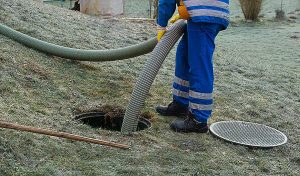
Oil furnaces are quite popular amongst homeowners for being an affordable heating solution. However, just like everything else, oil tanks need regular maintenance and have a life expectancy. Once it approaches the end of its lifespan, you will need to get HVAC companies to replace it. So, let’s take a look at some important tips that will guide you through an oil tank replacement process.
Can I Remove The Oil Tank On My Own?
The oil tank replacement process is something that you cannot do on your own. The reason is that both the removal and installation process is regulated by certain rules & regulations, including a professional taking over the process. Even if you tend to have knowledge and information about the removal process, you still need specialized tools and techniques to safely remove the tank. If you still choose to do it on your own, you risk costly oil spills and violation of environmental laws.
Once the existing oil tank has been removed, you need to dispose of it properly as well. Some states require a permit for tank removal and charge a disposal fee. If a professional is handling the job, make sure that he removes the existing tank as part of the process. However, if you are doing it on your own, you will need to attain the necessary permits.
Can I Install My Own Oil Tank?
If you are able to remove the oil tank, you can proceed with installing one as long as the oil tank installation code is followed. You should be aware of the regulations and procedures surrounding the installation process. Once the oil tank has been installed, it will need to pass a mandatory inspection. The shortcomings will be fixed to prevent an unsafe heating system.
Considering the risks involved, most homeowners prefer hiring a professional. Self-installation increases the risk of spills and oil leaks. While professionals tend to make the process much smoother and efficient.
Best Time To Install A New Tank
The best time to install a new tank is the spring season. If you do it in the winter, your house will remain heat-free for over six hours, which is not ideal. If the replacement process must take place in the winter, you should prepare a backup heating plan. Additionally, to avoid any inconvenience, you should be up to date with the life expectancy of the tank.
However, if you observe oil seepage, physical damage, mechanical breakdowns, and other types of problems, you should consider replacing the tank as soon as possible.
Factors To Consider When Installing An Oil Tank
Indoor Vs Outdoor Tanks
Indoor oil tanks are installed inside the house in an area that is unused yet accessible. This protects the tank against moisture and frost, which could otherwise lead to rust. As compared to outdoor oil tanks, indoor oil tanks last longer with an average lifespan of 25 years. However, you should ensure that the indoor tank is installed in a safe area, keeping it away from daily household activities.
Outdoor tanks on the other hand have a relatively less life expectancy due to a higher risk of exposure. These tanks are suitable for homeowners who are quite limited in space. Even though outdoor tanks are designed to handle brutal conditions, they have more risks and upkeeps as well. Therefore, if you are installing an outdoor tank, you will need to regularly inspect it for freezing and other potentially harmful situations.
Protection And Prevention Measures
Gelling and waxing are top concerns for oil tank installed outside. Waxing is when the tank forms paraffin crystals due to dropping temperatures. Gelling refers to the situation where the heating oil turns into sludge. To prevent such situations, you should consider wider fuel lines and atomizing nozzles.
In addition to that, insulate your lines by burying them underground. Furthermore, arrange a cover or shed to keep snow or ice from accumulating on the oil tank. These tips will surely help extend the lifespan of the oil tank.
Final Word
Removing an existing oil tank and installing a new one requires following the necessary standards and protocols. Make sure that you are aware of the codes if you are handling the process on your own. However, it is always advised to hire oil tank replacement services Huntington. And once the oil tank is installed, make sure you perform regular inspections and maintenance.









